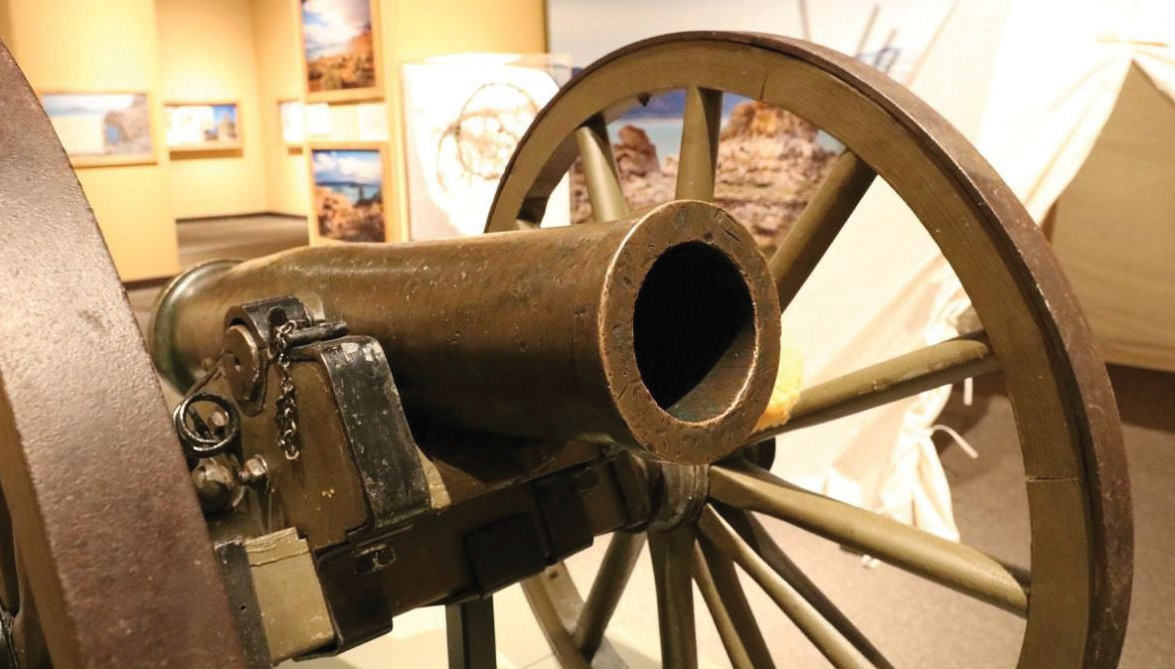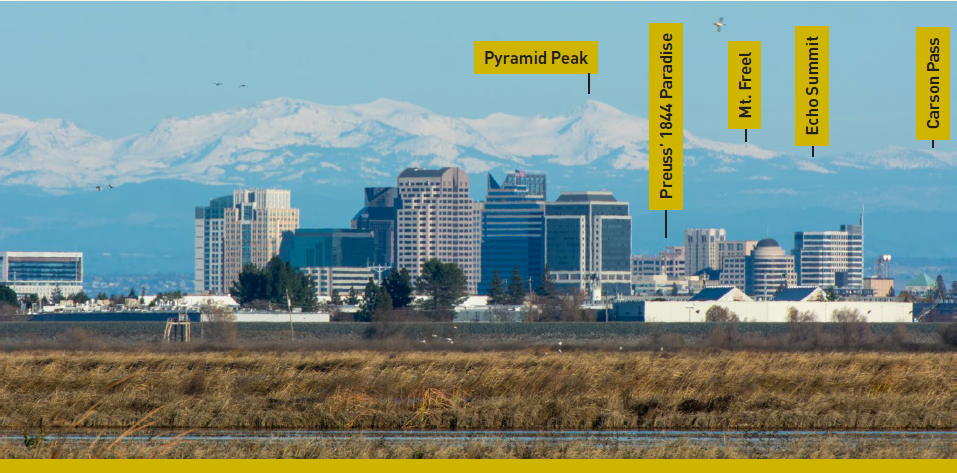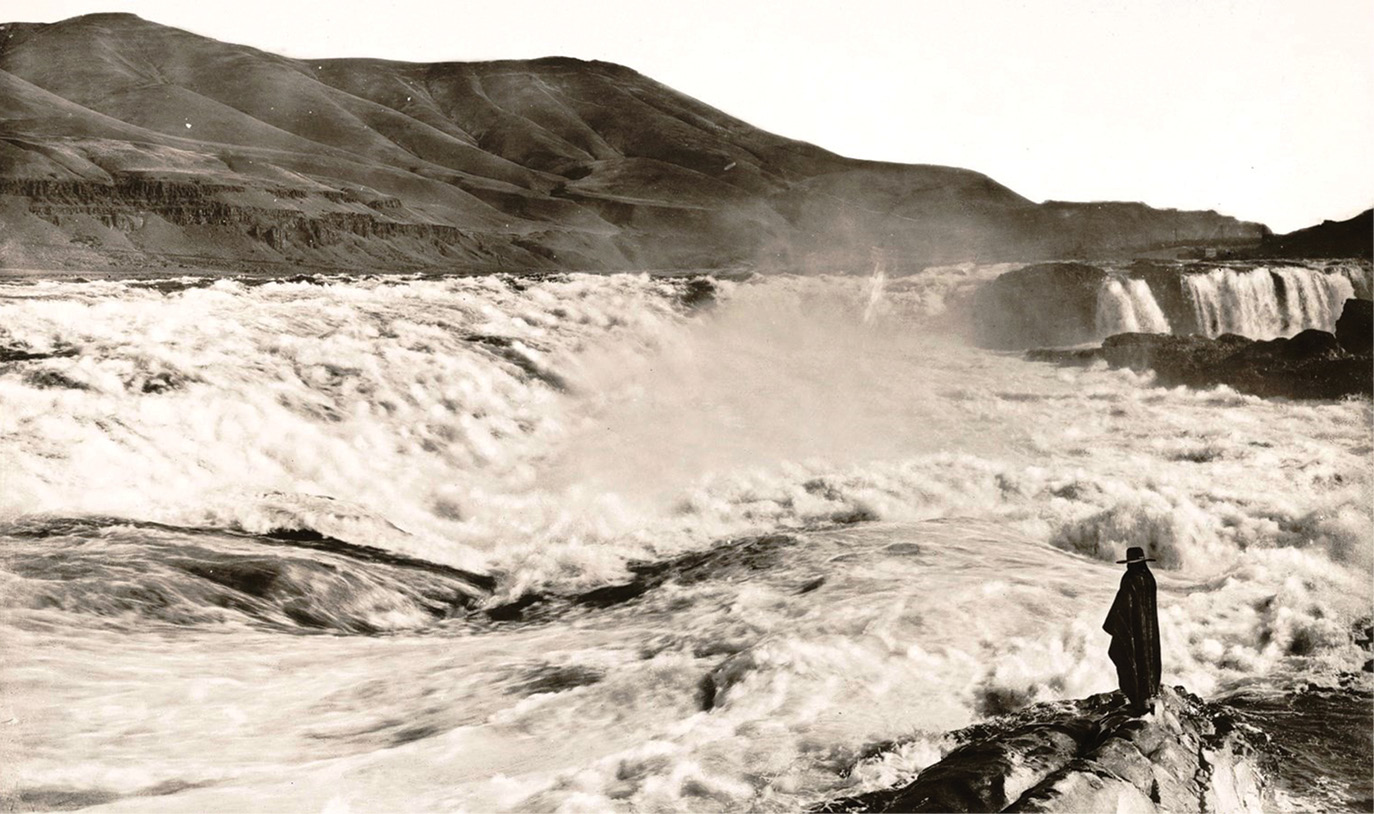The dearth of survey techniques in Charles Preuss’ accounts is regrettable but normal for historical papers. In this extract of Karl Preuss’ journal, we will be lightly exposed to the Jovian technique, used by the earliest cartographers/surveyors of the American West to determine that most difficult of values, Longitude. Pruess’ irreverence (expressive of a lack of veneration) will again expose what it was/is like to be an underdog in a world of survey alpha dogs.
John Fremont’s 2nd Expedition • 1843–44
May 30, Tuesday, 1843, page 81: This morning we started our monotonous journey through the prairie. We camped four miles from Westport [Kansas City], where the prairie begins. We bought our last necessities. No doubt we shall live better than last year; the provisions are better and more complete. Yet the monotony is the same, especially since for the first thousand miles we shall probably follow the same route as last year.
June 28: page 81: As miserable as I feel, I could not help smiling. Our hunters were eagerly expected, and someone called, “There they come across the hill.” Another said they were only buffaloes. Fremont called for his telescope and had not looked long when he cried: “It is they. Its they! There is Brandt’s head now. “Yes,” he turned to the men, “this is some glass! The smallest, the minutest object cannot escape when one has a glass like this in hand.” Then, again looking up, he suddenly cried, “No, No! It’s not they, it’s not they.” And Brandt’s head became the head of an old buffalo.
July 16, page 82: For tomorrow we are promised a mineral spring, toward which we are now marching. I believe seltzer water with Rhine wine would taste better to me.
July 20, page 83: Because of the bumpy road we covered only 20 miles yesterday. At a bad place, the gun carriage of the howitzer [12 pounder] broke, and it took time to repair it. If we had only left that ridiculous thing home.

Fremont’s Cannon. Courtesy of Nevada State Museum, Carson City, Nevada
July 21, page 83: I’ve got Louis’ number [Louis is the cook and the commander of the howitzer]. When that Berliner Schlaukopf [smart aleck from Berlin] comes with the pan and points out one or the other portion as the best, the thing to do is to take another one, which he has reserved for himself.
August 10, page 84: Shooting buffalo with the howitzer is a cruel but amusing sport.
August 20, page 85: Carson has sent ahead to Fort Hall to secure provisions for us. If the emigrants get ahead of us, we shall find not much there. [In 1843 the nine-year-old Fort Hall was located one mile northwest of the present BLM/USFS offices at the south end of Pocatello, Idaho.]
September 1, page 87: I must record that the chief [Fremont] orders the cannon to be moved in front of his tent every night.
September 23, page 90: It was raining yesterday when we left Fort Hall. Today I dispatched my letter with the people who are returning to Missouri. In December, my old girl will be surprised to receive only a letter instead of me.
October 10, page 92: Half-past 10 in the evening. I am sitting all alone by the fire to watch till twelve o’clock when an immersion of satellites will occur. [An immersion is an eclipse of a Jupiter moon by the shadow of Jupiter. When benefiting from the extra-precision of observation made on land, an immersion can be the key to determining Longitude. This is opposed to an occultation of a Jupiter moon which is when a moon passes out of sight of earth behind Jupiter.] To tell the truth, I wish the dear Lord had not attached any satellites at all to Jupiter. One can lose one’s mind over it. These immersions occur so often that one forgets how to sleep. [ Io has a rotation rate of one rotation around Jupiter every 42.5 hours and there are four such large moons of Jupiter.]
October 22, page 93: For four days we have been wandering in the Blue Mountains [Northeast Oregon] because we took the wrong route and had to hew a path through the firs. Although I had to walk, these have been the most agreeable days for me. The weather is fine (terribly cold during the night, to be sure) and the mountains beautiful. Balsam Firs and Larches are the predominant trees up to 200 feet tall. One can almost kill pheasants with a stick. If I could have a rifle on my back instead of the barometer, I could shoot the most magnificent supper for myself.
I am lying here at the Walla Walla River. Tomorrow we shall probably arrive at Dr. Whitman’s.
My pipe is my comfort in all hardships.
October 29, page 96: Instead of taking chances, he has changed his mind. Since yesterday morning our caravan has been moving through endless sand dunes along the Columbia River.
The emigrants overtook us yesterday evening in six boats (on the Columbia River). They shoot downstream fast as arrows, and we are following them at a snail’s pace. (See Applegate sidebar.)
A year ago today I returned to Washington [D.C.]. Oh, what a happy memory! And we have not yet covered half of our journey; we are still facing west. I wonder what my dear old girl and the children are doing. I just hope they are in good health! To the deuce with such a long trip!
November 8th, 1843, page 97: Last night we arrived at Fort Vancouver. I hope it will be our westernmost destination, from which we shall turn back… There are strange peaks, of which I have already seen a few. Mount Hood and Mount St. Helens are active volcanoes.
Mr. Fremont thinks that I shall have to cut off my beard in order to make myself presentable. Nothing doing! That would be the last straw, to have the disagreeable feeling of a growing beard for two weeks just for the privilege of a few dinner invitations. No! No! I’d rather stay with the Indians in the tent, especially since we have good bread, butter, milk, and potatoes.
[A footnote added by Mrs. Preuss:] “Here Fremont became so mad that he wanted to challenge Carl to a pistol duel because the latter did not want to cut off his beard. The rascal even wanted Carl to stay there. But he found that he was too stupid to continue the work, and so he wanted to make up again so that Carl would go with him. How Carl had to suffer to make a living for me and the children.”]
December 1, page 99: Fremont said progress was too slow on the bad roads and gave (my) wagon away. Yet the cannon causes just as much delay.
February 8, 1844, page 107: Sacramento Valley has been sighted! [From the top of ridges of the Sierra Nevada’s] We are slowly working our way through the snow [eight feet deep, packed down with clubs]. We had to abandon the cannon a few days ago. [As instructed, Karl himself abandoned the cannon within a few miles of what was to be Sonora Junction, Nevada. The howitzer has since been discovered and is now in the Nevada State Museum in Carson City, Nevada.]
February 13th, page 109: (From Freel Peak (?) they discovered Lake Tahoe to the north and Kit claims to have recognized part of the Sacramento Valley to the west.) Our astronomical observations do not allow us to doubt this, although I do not quite believe in the correctness of the longitude. Our latitude, as well as that given on the maps for the Bay of San Francisco, must be right. I estimate the distance from the summit to the foot of the mountains range to be thirty miles. [It was actually 60 miles, with a total of 85 to Sutter’s Fort, which might explain Preuss’ distrust of his own longitude.]
February 29, page 115: We shall have to work for another week before we get to the Sacramento Valley… I am stretched out on my buffalo hide, with my pipe between my lips, while my always hungry stomach hankers impatiently for the mule meat that is roasting on the fire. What a treat it would be with a bottle of wine—but stop, that thought is too beautiful.
March 2, page 117: …But now I sit here alone and cannot find the others. However, the [American] river is right in front of me, and I hope to find them tomorrow…the ring around the moon has only been there to scare me.
March 3, page 117: This is beginning to get serious. I couldn’t find the others again, and I am alone here… They must have taken another route, and I have to look out for myself now. My only salvation is to travel in the direction of the valley.
March 4, page 117: Today I made about seven or eight miles…I shall probably spend the night in the rain. Oh, my old sweetheart! If you knew how badly off I am at the moment! Just now I scraped up my evening meal. On the way I came across small puddles, where I caught a few frogs. I pulled off their legs and chewed them. Everything will be all right if I only keep a stiff upper lip. I am not afraid of the Indians. Unlike Kit, I do not see a murderer in every miserable human being.
March 5, page 118: After a walk of two hours I suddenly came upon our mule tracks, which I naturally followed, although I had no hope whatsoever of meeting the party before reaching the settlements. Soon afterwards I came to an Indian hut…they served me acorns [and] filled my pockets to capacity…this would surely bring me to the valley.
March 21, page 118: After a walk of (17 days), at two O’clock I came to a fire at which my party had had their noon meal. I collected my last ounce of strength, and before sunset I saw (the camp) before me. Friends—beautiful grass—magnificent country. (After the 5th day of rest) we rode all day and in the evening we arrived quite unexpectedly at Captain Sutter’s. He was born in Switzerland. Four days we lived in luxury at the fort.
Drinks, fish, bread, butter, milk, beef, pork, potatoes, wonderful salmon.
March 27, page 120: I shall probably settle on Captain Sutter’s property. Why is this country with such advantages so little known in the East? Because the whalers and skippers keep everything secret in order not to spoil their advantageous trade in hides and tallow with competition with more intelligent settlers. Even now they refuse to take along letters from the few settlers who are here.
At a dance with which the Indians entertained us, one had painted his penis with the Prussian national colors. Everybody, at least the males, run around stark naked.
April 16, 1844, page 124: Captain Sutter will give me as much land as I can use. This is certain: I am not going to waste any more words in Washington if I should be out of a job again. I’d rather pack up with the wife and children and spend the rest of my days at the Sacramento. Via Vera Cruz Mexico, and Acapulco the trip can be made fast and agreeably.

Downtown Sacramento California. By Permission of Jonathan Eisen
Compilers’ Note: Charles Preuss and John C. Fremont did return to California, but not in the manner anticipated. Because they left Kit Carson behind, Fremont’s 4th expedition ended in disaster, disrepute, and the death of ten men. However, upon the expedition escaping from Indians and the clutches of winter to Taos, New Mexico, all survivors but four joined the 49’s rush to the gold fields of California, “via the Gila route”. There, Karl surveyed Fremont’s Mariposa Land Grant, which contained hard rock prospects. However, Karl’s paradise at Sutter’s Fort was not to be, it having been stolen by the 49ers and the developers of Sacramento, CA.
Chad Erickson PS has been surveying since 1970; using chain and transit for the first four of those. After his Land Surveying degree he performed original G.L.O. township surveys in Alaska. He is licensed and operates boundary survey firms in Idaho and Arizona.
Sidebar
Applegate Trail
This was one of the emigrant trains comprising the Great Migration of 1843. The writings of the Applegate brothers, Charles, Lindsay, and Jesse and their wives, forever lamented the children they lost in the Columbia rapids in the Fall of 1843. It is likely that the success of this Fremont Expedition, in safely traversing an overland route at the same time, inspired the three brothers, and others, to pioneer and promote the “Applegate Trail”, an alternate overland route to the “Oregon Trail”. This route started somewhere near Imlay, NV, on the California Trail and wound into Southwestern Oregon.

Celilo Falls on the Columbia River, probable site of the 1843 Applegate tragedy. By Benjamin Gifford, 1902
The Applegate Trail opened the Rogue and Umpqua River country to homesteading. Jesse Applegate was a bona fide, experienced surveyor, and the Applegates acted as Land Locators to this area. See Ericksons’ articles in The American Surveyor Vol. 10 No 8; Vol 10 No 11 and April, May & June of 2014.